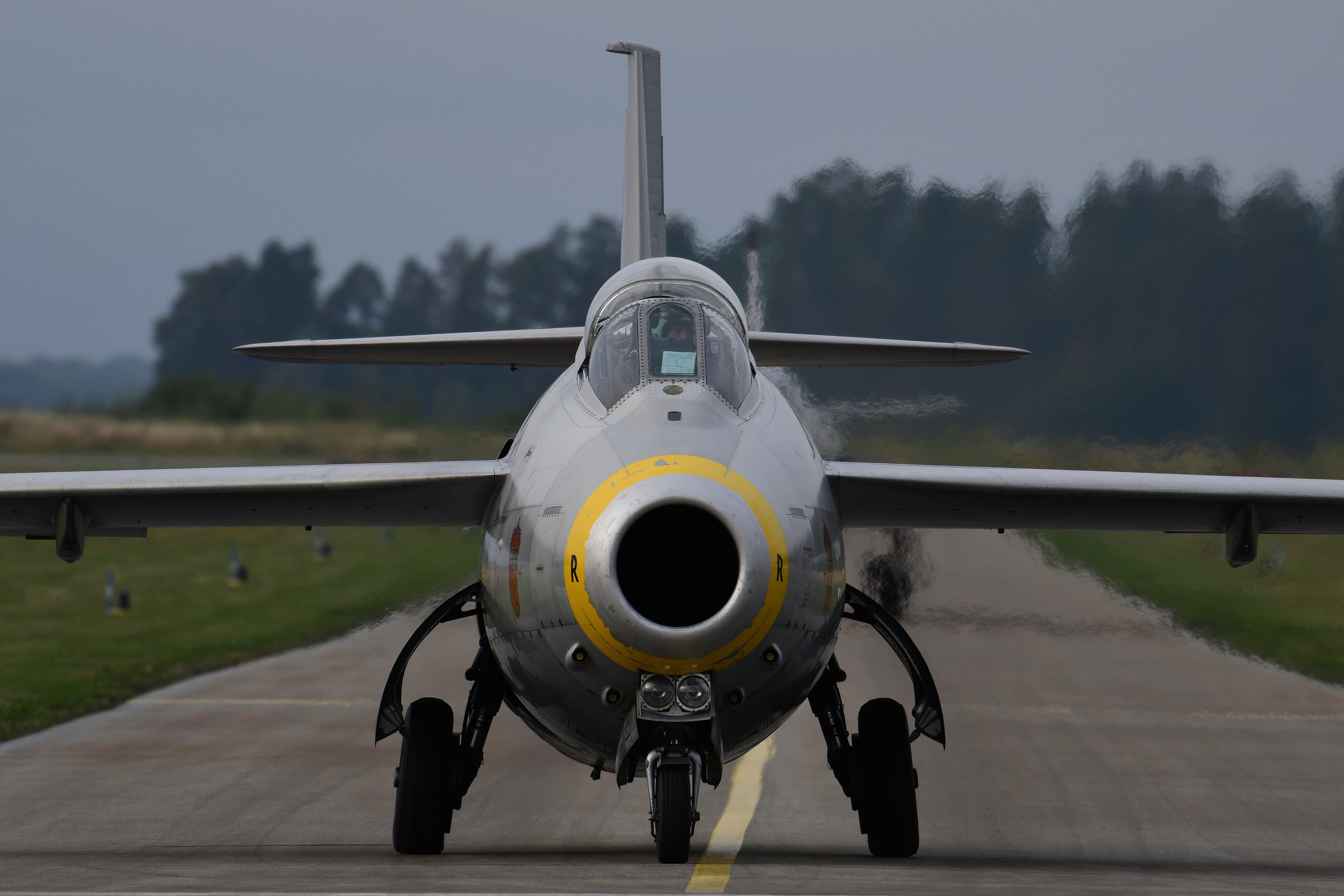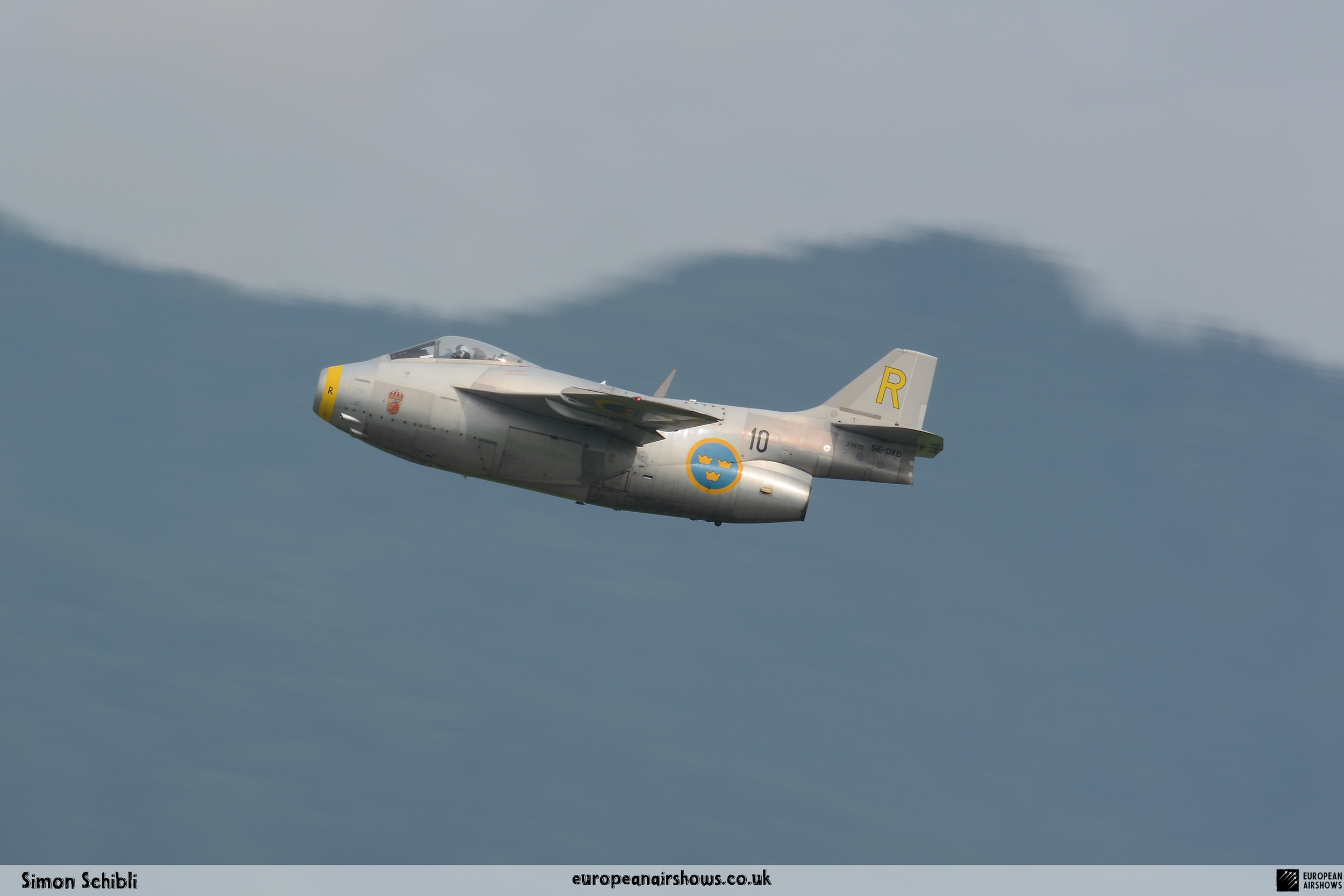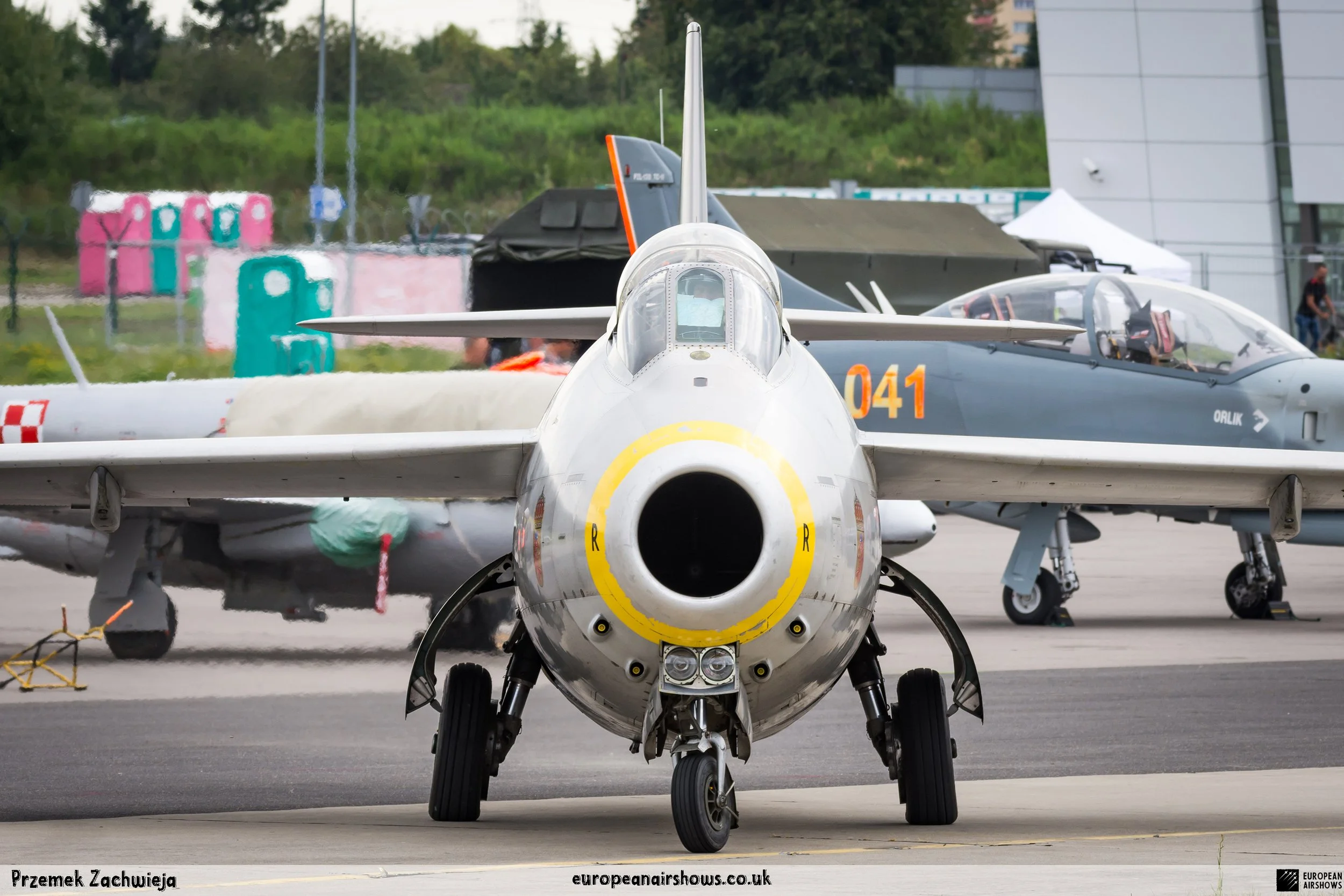
September 1 / Saab 29 Tunnan first flight
First Flight 1 September 1948
Saab 29 Tunnan
The Saab 29 Tunnan, affectionately known as “The Barrel” due to its distinctive shape, is a landmark in aviation history, particularly within the realm of Swedish military aviation. Its story begins in the immediate aftermath of World War II, a period marked by rapid advancements in technology and shifting geopolitical landscapes. Sweden, maintaining its policy of neutrality, recognized the necessity of modernizing its air force to keep pace with the evolving nature of aerial combat. This led to the birth of the Saab 29 Tunnan, an aircraft that would become a symbol of Swedish ingenuity and resilience.
In the late 1940s, the Swedish Air Force, or Flygvapnet, issued a requirement for a new jet-powered fighter to replace its aging fleet of piston-engine aircraft. The task of developing this new aircraft fell to Saab, a company that had already established itself as a key player in Swedish aviation. The design team at Saab, led by the talented engineer Lars Brising, embarked on the project with a clear vision of creating a high-performance jet fighter that could meet the demands of modern aerial warfare.
Drawing inspiration from German aeronautical research acquired during and after the war, particularly the work on swept-wing designs, the team set to work. The result was the Saab 29, featuring a barrel-shaped fuselage and swept wings—a design that was relatively new and innovative at the time. The first prototype, designated as the J 29, took to the skies on September 1, 1948, with test pilot Robert A. Moore at the controls. The initial flights were promising, showcasing good speed and handling characteristics, although the development process was not without its challenges. Early prototypes faced issues with stability and control, necessitating several design refinements.
One of the key breakthroughs in the development of the Tunnan came with the decision to use the British-designed de Havilland Ghost turbojet engine. This engine provided the necessary thrust and reliability, enabling the aircraft to achieve impressive speeds and agility. The combination of the swept-wing design and the powerful Ghost engine allowed the Tunnan to reach a maximum speed of around 660 mph (1,060 km/h) and a service ceiling of 50,000 feet (15,000 meters). Its armament typically included four 20mm cannons, and it had the capability to carry rockets and bombs, making it a versatile platform for both air-to-air and air-to-ground missions.
The Saab 29 Tunnan officially entered service with the Swedish Air Force in 1951, quickly becoming the backbone of Sweden’s air defense capabilities. It replaced older piston-engine fighters and was initially deployed as an interceptor, tasked with defending Swedish airspace against potential incursions during the tense early years of the Cold War. The Tunnan’s agility and speed made it a formidable adversary in aerial combat, and Swedish pilots quickly adapted to the new jet age. The aircraft earned a reputation for its reliability and effectiveness, and it was one of the first jet fighters to be equipped with an ejection seat, enhancing pilot safety.
Several variants of the Tunnan were developed over its production run. The initial production version was the J 29A, followed by the improved J 29B, which featured increased fuel capacity and other enhancements. The J 29E and J 29F versions introduced further refinements, including the addition of afterburners for increased thrust. One of the notable variants was the S 29C, a reconnaissance version equipped with cameras and other sensors for intelligence-gathering missions. This variant played a crucial role in monitoring and documenting activities in the Baltic region and beyond.
While the Saab 29 Tunnan primarily served with the Swedish Air Force, it also saw limited export success. Austria became the only foreign operator of the Tunnan, acquiring a number of surplus aircraft from Sweden in the late 1950s. The Austrian Air Force used the Tunnan for several years before eventually phasing it out in favor of more modern aircraft.
The Saab 29 Tunnan holds a special place in aviation history as one of the early jet fighters to successfully integrate swept-wing design and turbojet propulsion. It demonstrated Sweden’s ability to develop and produce advanced military aircraft independently, contributing to the nation’s defense and technological capabilities. The Tunnan’s operational success and the lessons learned from its development paved the way for subsequent Saab aircraft, including the Saab 32 Lansen and the iconic Saab 35 Draken. These aircraft continued to build on the technological foundations laid by the Tunnan, further establishing Saab as a key player in the global aerospace industry.
In summary, the Saab 29 Tunnan was a groundbreaking aircraft that marked Sweden’s entry into the jet age. Its innovative design, impressive performance, and operational versatility made it a cornerstone of the Swedish Air Force during a critical period in history. The Tunnan’s legacy endures as a testament to the ingenuity and capability of Swedish aerospace engineering, and it remains a symbol of national pride and technological achievement.
Tunnan Facts
First Swedish Jet Fighter: The Saab 29 Tunnan was Sweden’s first operational jet fighter, marking a significant leap in Swedish aviation technology when it first flew in 1948.
Swept-Wing Design: The Tunnan was one of the first jet fighters in the world to incorporate a swept-wing design, which was inspired by captured German research from World War II. This design contributed to its impressive performance.
Rapid Development: The development of the Tunnan was remarkably fast. The first prototype flew just three years after the initial design work began, demonstrating the efficiency and capability of Saab’s engineering team.
Combat Experience: Although Sweden maintained a policy of neutrality, the Tunnan saw combat during the Congo Crisis in the early 1960s. Swedish Tunnans were part of a United Nations peacekeeping force and conducted ground attack missions.
Record-Breaking Speed: In 1954, a Saab 29 Tunnan set a world speed record over a 500 km closed circuit, achieving an average speed of 977 km/h (607 mph). This record highlighted the aircraft’s advanced performance for its time.
Versatile Roles: The Tunnan served in multiple roles beyond air superiority, including reconnaissance and ground attack. Different variants were developed to fulfill these roles, showcasing the aircraft’s versatility.
Long Service Life: The Tunnan had a surprisingly long service life. It was introduced in 1951 and remained in service with the Swedish Air Force until 1976, demonstrating its reliability and effectiveness.
Export Success: While primarily used by Sweden, the Tunnan was also exported to Austria in the late 1950s. Austria operated the aircraft until the early 1970s, further extending the Tunnan’s operational history.
Innovative Ejection Seat: The Tunnan was equipped with an advanced ejection seat for its time, which greatly improved pilot safety. This was a significant feature given the high speeds and altitudes at which the aircraft operated.
Cultural Icon: The Tunnan has become a cultural icon in Sweden, symbolizing the country’s post-war technological advancements and independence in defense capabilities. It is celebrated in Swedish aviation museums and air shows, preserving its legacy for future generations.








